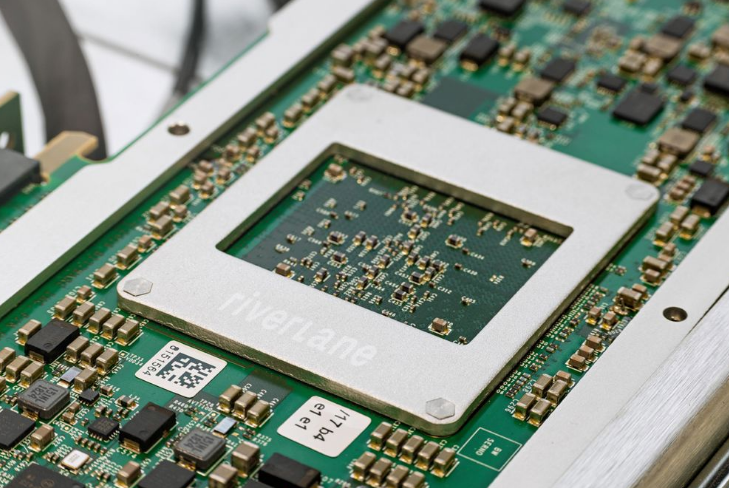Insider Brief:
- Materials science is integral to quantum computing development, providing insights that may lead to qubit stability, control, and performance by understanding unique material properties for precise quantum state management.
- Researchers at Argonne National Laboratory and Northern Illinois University are advancing quantum computing by using neodymium to stabilize light-controlled electron spins in perovskite materials, potentially improving qubit coherence and reliability.
- A Rice University study reveals that kagome lattice materials, specifically iron-tin thin films, gain magnetic properties from localized rather than mobile electrons, challenging existing theories and offering new possibilities for quantum logic applications.
- At the University of Sherbrooke, scientists have developed a theoretical framework to address qubit readout issues in superconducting quantum systems, potentially leading to improved readout fidelity and reduced error correction in quantum devices.
A review of quantum computing roadmaps from key industry players reveals a clear trend: many are betting on chemistry and materials science as the first areas likely to demonstrate quantum advantage. This emphasis is no surprise; unlike many fields where quantum computing is explored for the potential of speedup as compared to classical methods, these disciplines are grounded in quantum mechanics, making them uniquely suited to benefit from quantum computation. Yet, the relationship is more than one of mere utility—it’s inherently symbiotic. Materials science has become integral to informing quantum computing through new insights that refine qubit development and computational reliability. With quantum computing’s reliance on materials capable of precise control over quantum states, researchers are finding innovative ways to lean into unique material properties that enhance qubit performance.
Light-Controlled Spins in Perovskites for Qubit Enhancement
Recent research by Argonne National Laboratory and Northern Illinois University has demonstrated how light-manipulated electron spins in perovskite materials, specifically, methylammonium lead iodide (MAPbI3), could advance quantum computing technology. Perovskites, materials traditionally used in solar cells, exhibit a promising structure for quantum applications due to their ability to host stable spin states. In quantum computing, spin—a fundamental property of particles like electrons—is essential as it can represent quantum states, such as “up” and “down,” allowing qubits to encode information in superpositions.

To extend the exciton’s lifetime within MAPbI3, the researchers introduced neodymium, a rare earth metal with unpaired electrons. According to Argonne physicist Saw Wai Hla, “By modulating the concentration of the neodymium to the concentration of the excitons, we can end up using the neodymium as a kind of probe for the spins in the exciton,” enabling prolonged quantum coherence. This interaction creates a spin-entangled state, effectively linking the exciton’s electrons with those of the neodymium, which improves material stability and allows for precise control of qubit states, potentially leading to more reliable quantum devices.
Kagome Lattices: Exploring Quantum Magnetism for Enhanced Computing
How does basket-weaving relate to materials for quantum computing? In more ways than expected. A recent discovery by physicists at Rice University and collaborators explores the magnetic and electronic behaviors of kagome lattice materials, specifically iron-tin (FeSn) thin films. This research, published in Nature Communications, is directly relevant for superconducting quantum computers and high-temperature superconductors by reshaping our understanding of how magnetism and electronic interactions function in these advanced materials. Kagome lattices, structured in a distinctive, lattice-like pattern reminiscent of woven baskets, are known for their ability to support quantum phases such as topological flat bands—quantum states that retain electronic configurations without energy loss.
The team’s study reveals that FeSn’s magnetic properties actually come from localized electrons and not the mobile electrons traditionally believed to drive magnetism in kagome metals. This challenges longstanding theories and suggests a more complex relationship between magnetism and electron behavior in these materials. As Ming Yi, an associate professor at Rice, noted, “This work is expected to stimulate further experimental and theoretical studies on the emergent properties of quantum materials, deepening our understanding of these enigmatic materials and their potential real-world applications.”
The implications of this research extend beyond FeSn, as understanding flat bands and electron correlations in kagome magnets may influence future technologies in fields such as high-temperature superconductivity and topological quantum computation. By examining how magnetism and flat bands interact to produce quantum states, the team’s findings point to potential applications in quantum logic gates and other elements of quantum computing architectures.
Chirality in Nanomaterials: A New Window into Quantum Properties
Chirality, the property that makes objects non-superimposable on their mirror image, is traditionally observed in organic molecules but is gaining attention in nanomaterials for quantum applications. Researchers from the University of Camerino, the University of South Africa, and the University of Texas at Austin have recently highlighted that chiral nanomaterials exhibit unique spin-polarized electron transport, which could have implications for spintronics and quantum information technologies. This chirality-induced spin selectivity may be used to control quantum spin states with high precision.
For instance, spintronic devices—components also used in quantum computing that rely on spin rather than charge—could use chiral nanostructures to maintain coherence over longer timescales, addressing a common challenge in quantum computing.
Addressing Qubit Readout Challenges with Superconducting Materials
While the previously discussed materials studies centered primarily around deepening the understanding of material properties, a recent theoretical advancement by scientists at the University of Sherbrooke has taken a more application-focused approach, targeting a persistent challenge in superconducting qubit readouts. Superconducting qubits, which are widely valued for their high efficiency, have struggled with accurate readouts due to a phenomenon where qubits can escape their intended quantum states during measurement. This issue, according to the study, arises when microwave signals used in readouts inadvertently excite the qubits into higher, undesired energy states, a process termed “transmon ionization.”
The team developed a comprehensive theoretical framework to explain and predict this ionization, revealing that qubits in transmon-based systems can be pushed into unintended states due to multiphoton resonances within the system’s energy levels. According to the research, these multiphoton resonances occur at specific photon number thresholds, triggering state transitions that interfere with the nondestructive nature expected of qubit measurements in circuit quantum electrodynamics setups. By identifying these thresholds, the researchers have provided a basis for adjusting readout parameters, which could improve measurement fidelity in superconducting qubits, and potentially reduce the reliance on extensive error-correction protocols.
Mutual Progress: Materials as a Catalyst
The evolution of scientific revelation is often a piecemeal one — iterations in one locale gradually increase forward momentum in another, an ever-continuous symbiosis. While quantum computing for materials science is actively explored, materials science remains a necessary catalyst for informing the development of quantum computing. From the manipulation of spin states in perovskites to the development of stable qubits in kagome lattices, each discovery brings light to the value of material properties tailored to quantum requirements.

















